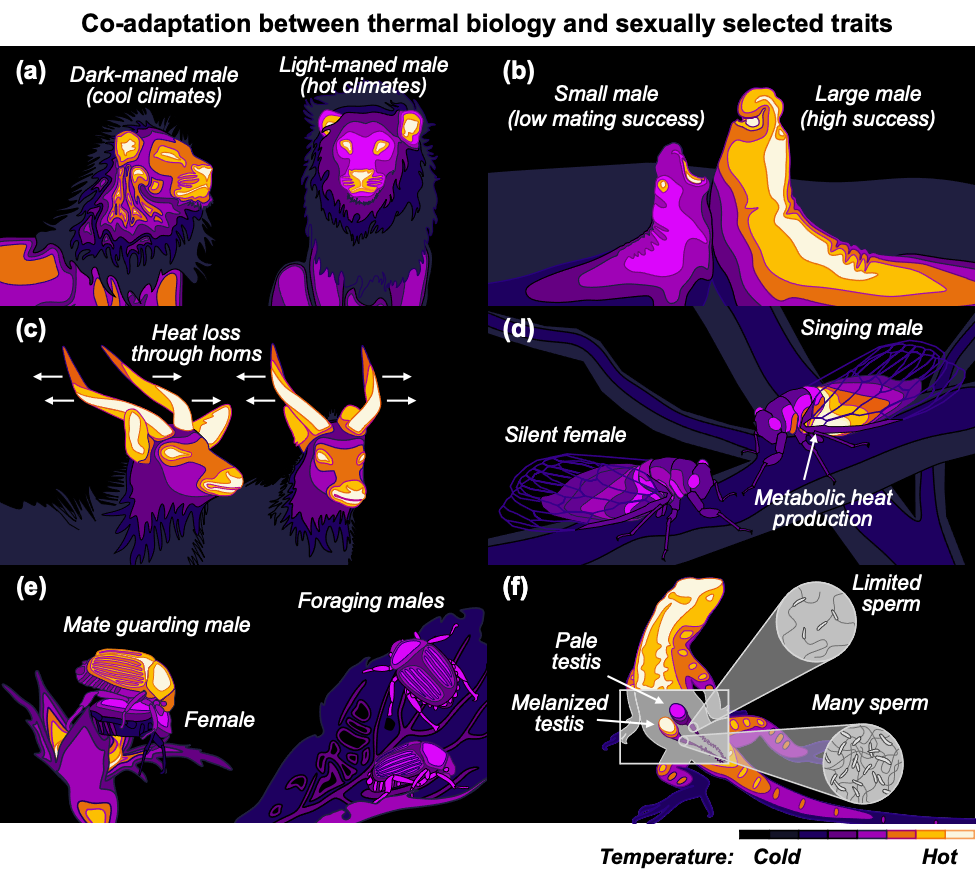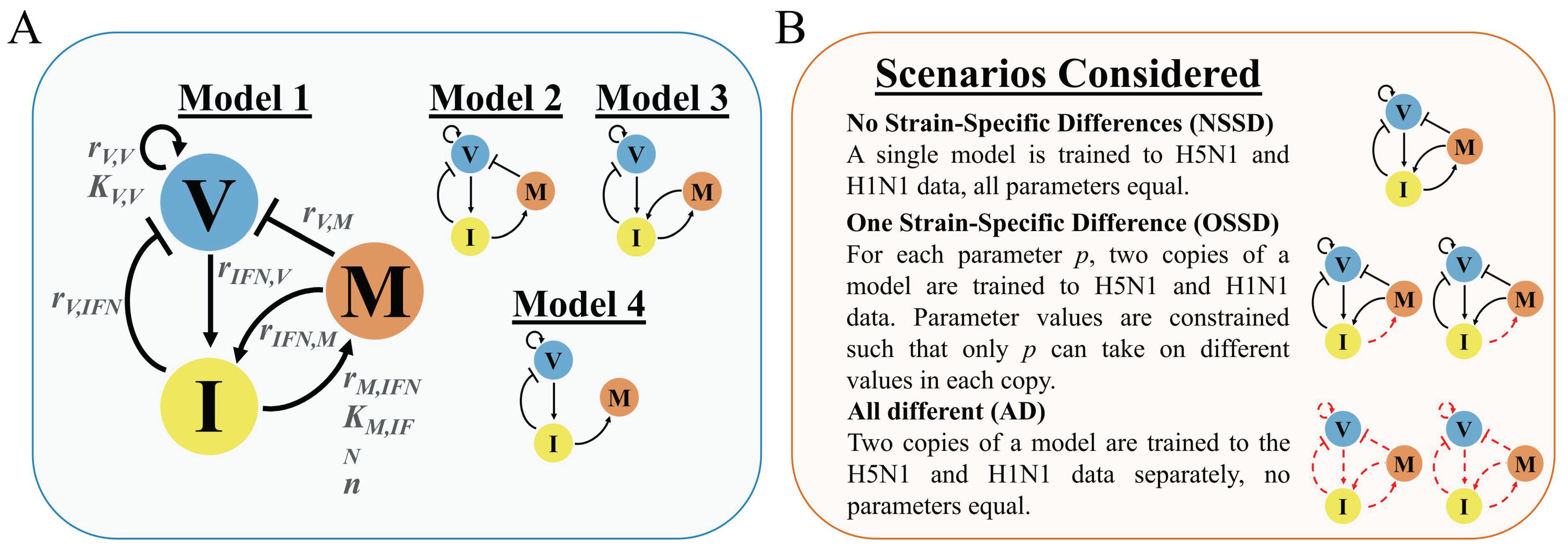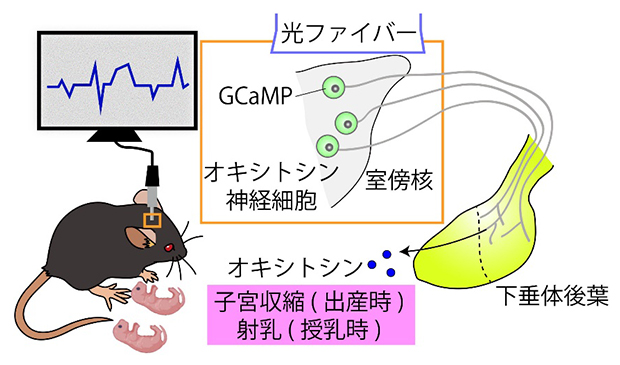2022-07-21 ワシントン大学セントルイス
 Ecology Letters誌に掲載された新しい論文から、ライオン、ゾウアザラシ、カモシカ、セミ、日本の甲虫、バラトカゲなどの動物において、温度と性選択の相互作用が、熱生理、体温調節、性選択形質の共適応を促す例を示すグラフィックです。
Ecology Letters誌に掲載された新しい論文から、ライオン、ゾウアザラシ、カモシカ、セミ、日本の甲虫、バラトカゲなどの動物において、温度と性選択の相互作用が、熱生理、体温調節、性選択形質の共適応を促す例を示すグラフィックです。
From a new paper published in Ecology Letters, this graphic shows examples of how interactions between temperature and sexual selection drive the co-adaptation of thermal physiology, thermoregulation and sexually selected traits in animals such as lions, elephant seals, antelopes, cicadas, Japanese beetles and rose-bellied lizards. (Image courtesy of Noah Leith and Ecology Letters)
研究者たちは、動物たちが、交尾のときだけ遭遇する危険な気温に耐えることができるメカニズムも進化させてきたという証拠を広く発見したのである。
<関連情報>
- https://source.wustl.edu/2022/07/the-birds-and-the-bees-and-the-temperature-gauge/
- https://onlinelibrary.wiley.com/doi/10.1111/ele.14072
熱生態系と性淘汰の進化的相互作用 Evolutionary interactions between thermal ecology and sexual selection
Noah T. Leith,Kasey D. Fowler-Finn,Michael P. Moore
Ecology Letters Published: 13 July 2022
DOI:https://doi.org/10.1111/ele.14072
Abstract
Thermal ecology and mate competition are both pervasive features of ecological adaptation. A surge of recent work has uncovered the diversity of ways in which temperature affects mating interactions and sexual selection. However, the potential for thermal biology and reproductive ecology to evolve together as organisms adapt to their thermal environment has been underappreciated. Here, we develop a series of hypotheses regarding (1) not only how thermal ecology affects mating system dynamics, but also how mating dynamics can generate selection on thermal traits; and (2) how the thermal consequences of mate competition favour the reciprocal co-adaptation of thermal biology and sexual traits. We discuss our hypotheses in the context of both pre-copulatory and post-copulatory processes. We also call for future work integrating experimental and phylogenetic comparative approaches to understand evolutionary feedbacks between thermal ecology and sexual selection. Overall, studying reciprocal feedbacks between thermal ecology and sexual selection may be necessary to understand how organisms have adapted to the environments of the past and could persist in the environments of the future.


